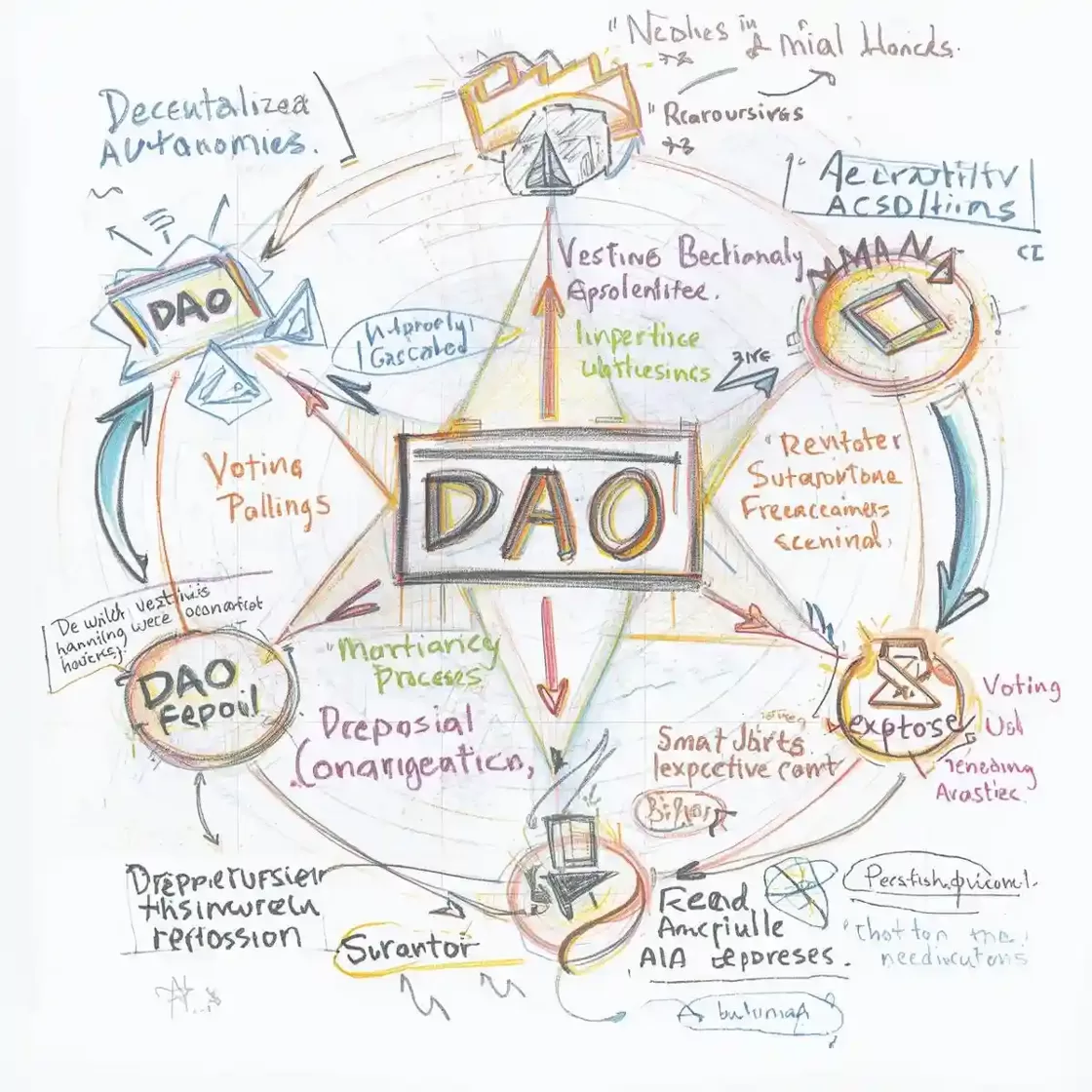The Rise of Crypto Communities in Peru A New Blueprint for Decentralized Living

Imagine a village deep in the Peruvian Amazon where decisions are made by digital vote, the local economy runs on blockchain, and the community is built by a global collective of developers, artists, and pioneers. This is not science fiction. It is the emerging reality of crypto communities in Peru.
These are not tourist resorts or off-grid survivalist camps. They are physical-world experiments in decentralized governance, where your voice is heard through tokens and your work is valued in a transparent, digital economy. If you have ever dreamed of helping build a community from the ground up, this is your blueprint.
Latin America Crypto Compliance 2026 — Travel Rule Outlook
What exchanges, wallets, and fintechs should prepare for: FATF alignment, VASP data standards, and cross-border transfers.
Read the compliance briefCrypto Remittances in LatAm — Stablecoin Growth 2025
Fees, speed, and adoption dynamics: why USD-stable remittances are rising and how to evaluate corridor risks.
Explore the analysisWhat is a Crypto Community or DAO Village
A crypto community, often formed as a Decentralized Autonomous Organization (DAO), is a group of people united by a shared goal and governed by rules enforced on a blockchain. A DAO village is the physical manifestation of this concept.
It is a piece of land, co-owned and co-managed by its residents through a digital charter. Think of it as a startup merged with a neighborhood, where every stakeholder has a say.
The core idea is to use technology to create more equitable, transparent, and sustainable models for living and working together. Peru, with its rich biodiversity and evolving digital landscape, has become a fertile ground for these experiments.
Why Peru is the Perfect Ground for a Web3 Hub
Peru offers a unique combination of factors that make it an ideal location for the next wave of crypto communities.
-
Affordable Land: Compared to North America or Europe, vast tracts of fertile land are available at a fraction of the cost.
-
Favorable Climate: The climate allows for year-round agriculture and sustainable living, reducing reliance on complex infrastructure.
-
Growing Digital Nomad Scene: Cities like Lima and Cusco are already hubs for remote workers, creating a talent pool interested in new living models.
-
Cultural Richness: The opportunity to integrate with and learn from ancient indigenous cultures provides a profound counterbalance to a hyper-digital life.
How to Start a DAO Village A Step by Step Guide for Pioneers
Building a decentralized village is a complex but achievable task. It breaks down into a series of clear, actionable phases.
Step 1 Assemble Your Founding Tribe and Define Your Mission
Every great community starts with a shared vision. Your first task is to find your core team.
Use online platforms like Discord, Twitter, and specialized Web3 forums to connect with potential collaborators. Draft a clear manifesto. What are your core values? Is your focus on technological innovation, environmental regeneration, or artistic creation? A strong, shared mission is your foundation.
Step 2 Legally Structure Your DAO and Tokenize
This is where the digital meets the legal. You need a framework for collective ownership and decision-making.
First, create your DAO using platforms like Aragon or Syndicate to manage proposals and voting. Then, mint your governance token. This token represents membership, voting power, and a share in the community's assets.
Crucially, partner with local Peruvian lawyers to establish a legal entity, such as a foundation or cooperative. This entity will legally hold the land, protecting the DAO and its members.
Step 3 Acquire and Develop the Land
With funding secured through your token launch, the physical work begins.
Location is everything. You need to consider access to clean water, solar exposure, internet connectivity, and proximity to local towns. Once you secure the land, phase one of development focuses on core infrastructure.
-
Energy. Install solar panels and battery storage systems.
-
Internet. Set up satellite internet like Starlink as a reliable backbone.
-
Water. Implement rainwater harvesting and filtration systems.
-
Shelter. Build initial housing and communal spaces using local or sustainable materials.
The Tangible Benefits of Joining a Decentralized Village in Peru
What draws people to these ambitious projects? The advantages are both practical and profound.
For Digital Nomads and Remote Workers
This is more than a change of scenery. It is a change of paradigm.
You get to live in a breathtaking natural environment without sacrificing your connectivity. You can pay for your accommodation and food in crypto, simplifying your finances. Most importantly, you become part of a curated network of innovators, opening doors to collaboration you would not find anywhere else.
For Web3 Entrepreneurs and Developers
For builders, a DAO village is the ultimate real-world testing ground.
It is a living lab for your DeFi protocols, decentralized identity systems, and tokenized economies. The global marketing appeal of launching a project from a crypto commune in the Amazon is immense. You are surrounded by your target audience and potential collaborators, creating an unparalleled feedback loop.
Navigating the Challenges Realistic Solutions for a Sustainable Future
Vision is vital, but practicality is what makes it last. Here are the common hurdles and how modern communities are solving them.
Regulatory Uncertainty and Community Integration
The concept of a foreign DAO owning land can raise eyebrows with local authorities.
The solution is proactive integration. Be transparent with government officials. Hire local staff. Source materials from nearby businesses. Launch initiatives that benefit neighboring communities, such as educational programs or infrastructure projects. Become a valued part of the region, not an isolated enclave.
Ensuring Ecological Sustainability
Building in a sensitive ecosystem like the Amazon comes with immense responsibility.
From day one, work with permaculture designers and ecologists. Commit to a principle of regenerative development. Use composting toilets, natural building techniques, and reforest more land than you use. Your blockchain can even track your positive environmental impact.
Maintaining Reliable Infrastructure and Social Cohesion
A community is only as strong as its weakest link, whether technological or social.
For infrastructure, build in redundancy. Have backup power and multiple internet sources. For social health, the DAO structure itself is key. Implement fair voting mechanisms, create channels for offline conflict resolution, and prioritize in-person gatherings to build genuine trust beyond the digital screen.
Conclusion The Future is a Community Owned and Digitally Native
The dream of building crypto communities in Peru is no longer a fantasy. It is a feasible, unfolding project that merges the promise of Web3 with the ancient human need for belonging and purpose. These villages are proving that we can use decentralized technology not to escape the physical world, but to build better versions of it.
The journey is complex, filled with legal, technical, and social challenges. But for those with the courage to pioneer, the reward is a chance to write a new ruleset for community living. It is an opportunity to own a piece of your future, literally and figuratively, in one of the most inspiring places on Earth.
Are you ready to help build the future? The next proposal is waiting for your vote.
Frequently Asked Questions About Crypto Communities in Peru
How much does it cost to join a crypto commune in Peru?
Costs vary widely. Some communities require an initial investment
to purchase governance tokens, which can range from a few hundred
to several thousand dollars. Others operate on a work-to-earn or
contribute-to-earn model, where you can earn your place through valuable
skills and labor.
Is it legal for a DAO to own land in Peru?
A DAO itself cannot currently own land in Peru as a legal entity.
This is why successful projects always form a parallel legal structure,
like a Peruvian foundation or cooperative, which legally holds the
land on behalf of the DAO and its token holders.
What is the internet connectivity like in these remote villages?
Modern satellite internet services like Starlink have been a game-changer.
Most established communes offer high-speed, low-latency internet
that is more than sufficient for remote work, video calls, and blockchain
development.
How do these communities handle security and conflict resolution?
Security is a blend of traditional and modern methods. Physically,
communities often have agreements with local security services. For
internal conflicts, the DAO typically has a governance process outlined
in its charter, which can include mediation and community voting.
The transparent nature of on-chain actions acts as a natural deterrent
to bad behavior.
Can I visit before I decide to commit fully?
Absolutely. Most crypto communities actively encourage short-term
visits for potential members. They often offer guest lodging, community
meals, and tours so you can experience the lifestyle and culture
firsthand before making any significant investment.
Expat Cost of Living & Salary Calculator
Estimate take-home pay, PPP-adjusted net, and living costs across countries and cities.
Open calculatorNature-Based Tourism ROI Calculator
Model ROI, IRR, payback, and cash flows for eco-lodges and nature projects in minutes.
Calculate ROIPeruvian Amazon Homestead Workload
A realistic week-by-week breakdown of tasks, effort, and time management for jungle living.
Read the guideAyahuasca Industry: Warnings & 2025 Crisis
Government advisories, risks, and what responsible centers should do next.
See the analysis